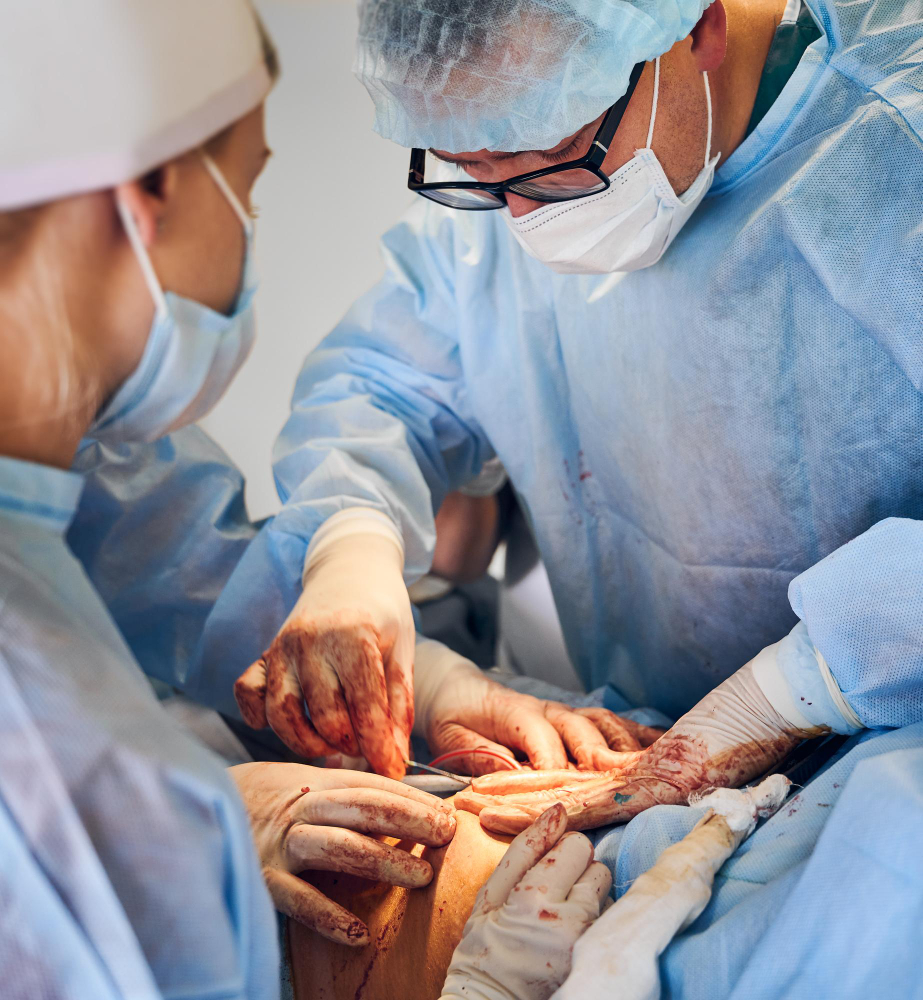Arthroscopy vs. Open Surgery: Why Minimally Invasive Might Be Your Best Option
By Dr. Kshitij Mody, Leading Arthroscopy Specialist at Welcare Orthopedics Hospital, Vadodara
“Doctor, what’s the difference between arthroscopy and regular surgery? And why does everyone keep telling me that minimally invasive is better?”
This question comes up in nearly every consultation I have at our arthroscopy hospital in Vadodara. And honestly, it’s one of the most important questions you can ask when facing joint surgery. The choice between arthroscopic (minimally invasive) and open surgery can significantly impact your recovery, your pain levels, and how quickly you get back to your normal life.
Let me share a story that perfectly illustrates this difference. Two patients came to see me within the same week – both with similar knee problems, both needing surgery. Rajesh chose arthroscopic surgery, while his neighbor insisted on what he called “proper surgery” (open procedure). Three months later, Rajesh was back to playing cricket, while his neighbor was still struggling with pain and stiffness. The difference? The surgical approach.
Today, I want to have an honest, detailed conversation about these two approaches, so you can make the most informed decision for your health.
Understanding the Fundamentals: What Exactly Are We Talking About?
Before we dive into comparisons, let’s make sure we’re on the same page about what each approach involves.
Arthroscopic Surgery: The Minimally Invasive Approach
Imagine being able to repair the inside of your joint through incisions so small they’re barely noticeable. That’s arthroscopy. As an arthroscopy surgeon in Vadodara, I use a tiny camera (about the width of a pencil) and specialized instruments inserted through 2-3 small incisions, each less than half an inch long.
The arthroscope – that’s our camera – acts like my eyes inside your joint, projecting high-definition images onto a screen. This allows me to see everything inside your joint with incredible clarity, often better than what’s possible with open surgery. I can then use miniature instruments to repair torn tissue, remove damaged cartilage, or address whatever problem is causing your pain.
Open Surgery: The Traditional Approach
Open surgery involves making a larger incision – typically 3-6 inches or more – to directly access and visualize the joint. This approach has been used for decades and certainly has its place in orthopedic surgery. The surgeon can see and touch the structures directly, which can be advantageous in complex cases.
The Revolution in Joint Surgery: Why Arthroscopy Changed Everything
When I first started practicing as an arthroscopy specialist in Vadodara, I was amazed by how much this technology had revolutionized joint surgery. Let me explain why this matters for you.
Precision Beyond Human Vision
The arthroscopic camera magnifies everything inside your joint, allowing me to see details that would be impossible to detect with the naked eye during open surgery. I can identify and treat problems that might be missed in traditional surgery. This precision translates to better outcomes and more targeted treatment.
Preservation of Healthy Tissue
In open surgery, we often have to cut through healthy muscle, tendons, and other tissues to reach the problem area. With arthroscopy, we work around these structures, preserving the healthy tissue that’s crucial for your recovery and long-term joint function.
Reduced Surgical Trauma
This is perhaps the most significant advantage. Less cutting means less trauma to your body, which translates directly into faster healing, less pain, and quicker recovery.


The Real-World Benefits: What This Means for Your Recovery
Let me break down the practical differences you’ll experience as a patient:
Pain Management: A Dramatically Different Experience
The difference in post-operative pain between arthroscopic and open surgery is honestly remarkable. Most of my patients are surprised by how manageable their discomfort is after arthroscopy surgery in Vadodara.
With arthroscopy:
- Most patients rate their pain as 3-4 out of 10 in the first few days
- Many can manage with over-the-counter pain medications within a week
- Sleep disruption is minimal after the first few nights
- Daily activities become manageable much sooner
With open surgery:
- Pain levels are typically 6-8 out of 10 initially
- Prescription pain medications are needed for weeks
- Sleep can be disrupted for weeks or months
- Simple activities like getting dressed can be challenging for extended periods
Recovery Timeline: Getting Back to Your Life
This is where the difference really becomes clear:
Arthroscopic Recovery:
- Walking the same day of surgery
- Driving within a few days (depending on which joint and your comfort level)
- Return to desk work within 3-5 days
- Light activities and exercises within 1-2 weeks
- Return to sports and full activity typically within 6-12 weeks
Open Surgery Recovery:
- May require overnight hospital stay
- Walking assistance needed for several days
- Driving restricted for 1-2 weeks
- Return to work may take 2-4 weeks
- Full activity return can take 3-6 months
Scarring and Cosmetic Results
As your arthroscopy surgeon in Vadodara, I understand that how your joint looks after surgery matters to many patients.
Arthroscopic surgery leaves 2-3 small scars, each about the size of a small Band-Aid. Within a few months, these are barely visible. Open surgery, on the other hand, results in a longer scar that, while it fades over time, remains visible.
When Open Surgery Still Makes Sense: Honest Transparency
Now, I want to be completely honest with you. While arthroscopy has revolutionized joint surgery, there are still situations where open surgery is the better choice. As a responsible arthroscopy specialist in Vadodara, I always recommend the approach that will give you the best long-term outcome, regardless of which technique it involves.
Situations Where Open Surgery May Be Preferred:
- Complex fractures requiring bone reconstruction
- Total joint replacement procedures
- Severe cases where extensive reconstruction is needed
- Some cases of significant ligament reconstruction
- When the surgeon needs to access areas not easily reachable arthroscopically
The key is having an experienced surgeon who can honestly assess your situation and recommend the approach that’s truly best for your specific condition.
The Technology Behind Arthroscopy: Why It Works So Well
Let me give you a glimpse into the advanced technology we use at our arthroscopy hospital in Vadodara, because understanding the “how” helps you appreciate the “why.”
High-Definition Imaging
Modern arthroscopes provide incredibly clear, magnified images. I can see details of cartilage damage, subtle tears, and inflammatory changes that would be impossible to detect otherwise. This allows for precise treatment of exactly what’s wrong, nothing more, nothing less.
Specialized Instruments
We have an entire arsenal of miniature instruments designed specifically for arthroscopic surgery:
- Tiny scissors for cutting damaged tissue
- Microscopic graspers for removing loose fragments
- Specialized shavers for smoothing rough cartilage
- Radio-frequency devices for precise tissue treatment
Fluid Management Systems
During arthroscopy, we use a continuous flow of sterile fluid to expand the joint space and provide clear visualization. Advanced pumps precisely control this flow, maintaining optimal conditions throughout the procedure.
Addressing Common Concerns: Your Questions Answered
Over the years, I’ve heard the same concerns from patients considering arthroscopic surgery. Let me address the most common ones:
“Is arthroscopy as thorough as open surgery?”
Absolutely. In fact, in many cases, it’s more thorough. The magnification and illumination provided by the arthroscope allow me to see problems that might be missed in open surgery. I can examine every surface of the joint systematically and address all identified issues.
“What if you find something unexpected during arthroscopy?”
This is actually one of the strengths of arthroscopy. If we discover additional problems during the procedure, we can often address them immediately through the same small incisions. In rare cases where open surgery becomes necessary, we can make that transition during the same procedure.
